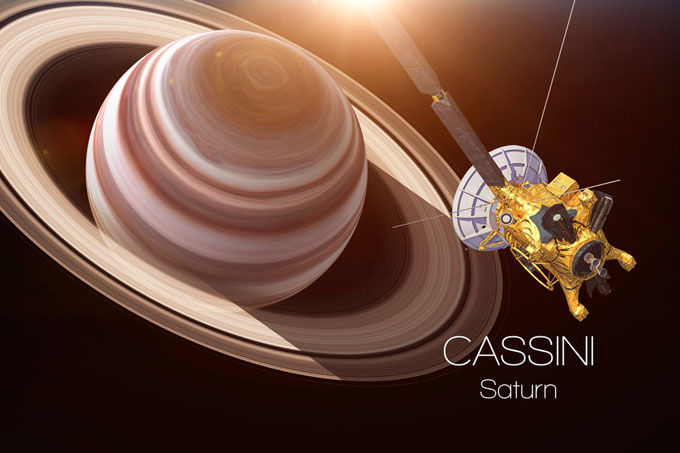Professor Berry Billingsley explores what we have learnt from the latest space mission.
As Cassini prepares for its final dive into Saturn’s atmosphere (scheduled for Friday night) it is an opportune moment to ask – what have we really learnt from its mission to probe and examine one of our more distant and spectacular solar system cousins.
We probably suppose that astronomers and astrophysicists have gathered lots of interesting data – to address questions of interest to them. Indeed look online and the word is that Cassini has sent us 453,048 images and has already led to 3,948 published papers. But what about for the rest of us – is there anything that we would categorise as interesting and important. Clearly we didn’t find intelligent life or a remarkable alien landmark – or we’d have heard. But the job of the science communicator is always to try to relate science to something that people will care about – and so in this case, what sorts of things could that be?
For me – and my specialism is science education – the pictures speak for themselves. To an extent, we all now feel that we have ‘been there’.
Cassini’s mesmerising pictures of fissures on the surface of another planet’s moons get us thinking that however big space is – and however small we are – the vastness of space hasn’t stopped us from embarking on missions to look more closely at what’s out there.
The mission teaches or reminds us how much time and teamwork it takes to plan and carry out a mission. Today there are opportunities to help children to find out a hundred details that young people love to know like how long light takes to travel between Cassini and the earth, what the sun looks like from that far away, whether it’s true that other moons and planets can have seas and atmospheres and if so then how they got there.
We know from our own research that when children talk about what they value about being human, they tell us that it is good that we are explorers and that we have looked and travelled beyond our own planet. It’s exciting to see and to imagine another world – and how much more exciting when this is the first set of up-close distant planet shots that you see as a child. Not only nationally but internationally, young minds are pondering big questions like – how big is the solar system, how far away is Saturn, what would it be like to be there, and why is the universe the way that it is? Want to know what we’ve found out by sending a probe to Saturn – try asking a ten year old. And if your ten year old doesn’t know – now is the time to turn on the TV or fire up the pc!
Berry Billingsley is Professor of Science Education in the Faculty of Education and principal investigator of the LASAR (Learning about Science and Religion) Research Project.
Berry’s first career was with the BBC where she produced television and radio programmes including Tomorrow’s World and Science in Action.
 Expert comment
Expert comment Jeanette Earl
Jeanette Earl 1441
1441


